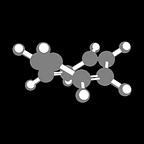Pulling Back the Curtain on some Chemical Magic
If you haven’t heard of the magical Oscillating Clock Reaction, you clearly fell asleep in gen chem
In order to drum up interest in chemistry, instructors at all levels perform demonstrations (or demos) of chemical reactions. The power of demonstrations has been used to lure the uninitiated since the 18th century. Think about it, what better way is there to get the attention of a sleepy 18 year old gen chem student than this:
This is a quintessential demo in chemistry — the hydrogen balloon explosion… with a twist! The instructor above first demonstrates the explosion of plain old hydrogen, then shows the difference when you add oxygen to the mix. The video speaks for itself, but if I had to put it into words, I’d describe the hydrogen balloon explosion sound as more a “whuuuumpp” whereas the hydrogen plus oxygen balloon is more of a “POWWW!”
So yeah, that’s how you wake up the class on Monday morning. Also, I willingly admit that I unashamedly bribed my class with this demo on multiple occasions.
Chemistry instructors use all manner of demos in this fashion. One of the more tame (that is, much less noisy), yet still visually…
